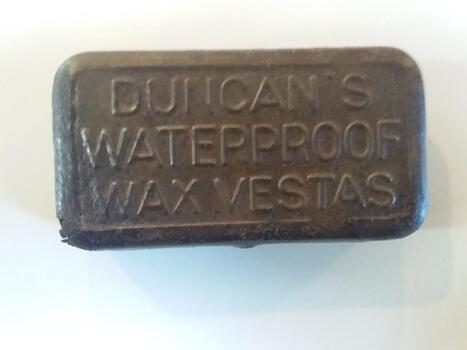Historical information
By the close of the 19th century, colonial children in Australia (especially poorer ones) were expected to work by age 10 or 11. Boys could become apprentices or assistants to trades such as butchers, printers, carpenters, bakers, smiths or services such as delivering newspapers. Girls could work as domestic servants, seamstresses, or in large clothing factories or weaving mills. Girls as young as 6 could work in cities selling stationary or matches to passers-by.
In the 1880s workers in matchstick factories, predominantly women and young girls (4-16 years old) from working-class families could work up to 14 hours a day and were exposed to deadly phosphorous vapours on a daily basis. This led to the devastating disease known as “phossy jaw” or “phosphorous necrosis of the jaw” which caused the jawbone to rot.
Physical description
This small rectangular tin matchbox with raised writing on top would once have been gold and brightly coloured. It has a metal striker on the inside as this type of match contains phosphorous which is volatile and can be lit by friction.
Inscriptions & markings
Duncan's Waterproof Wax vestas






